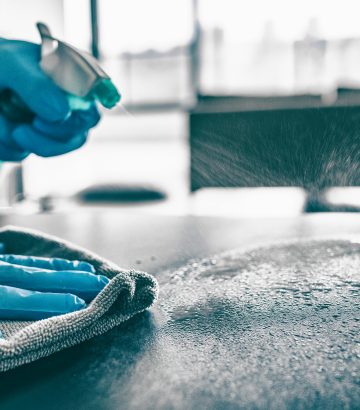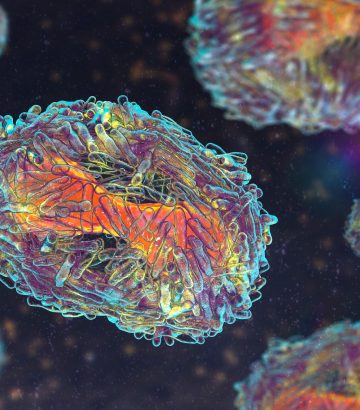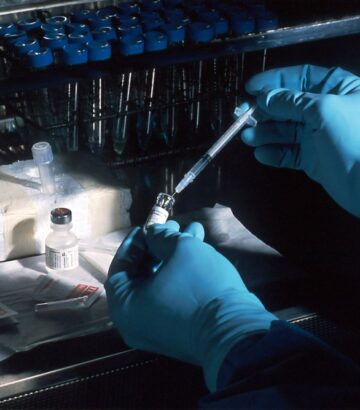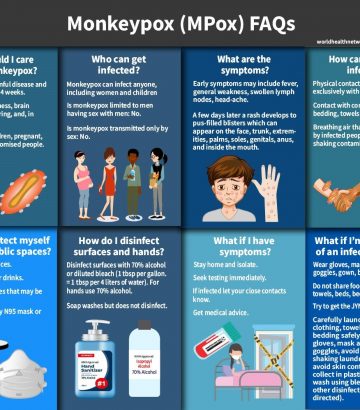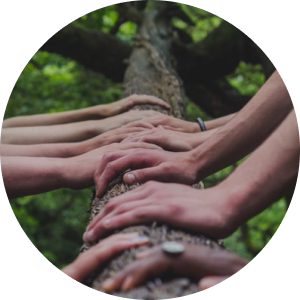Monkeypox Pandemic
Background
Monkeypox (or MPXV for short) is a DNA virus from the Orthopox family (Orthopoxvirus, which includes smallpסx, cowpox and more), so named after it was discovered in laboratory monkeys in Denmark in 1958. It was first identified in humans in Central and West Africa in 1970. Over the next decade, 47 cases were reported, 38 in the Congo alone. Over 80% of those infected were children up to age 10, and only in a few cases was there human to human transmission.[1] Since infection rates, R, were below 1, the outbreak was self-limiting. In contrast, in the 1990s there were 419 DRC cases reported, only 22% of which reported no contact with another person with monkeypox, while 78% had contact with an infected person 7–21 days before onset of disease.[2] In the first nine months of 2020 alone, 4,594 suspected cases were reported in the DRC.[3] From January 2020 to May 2022 an estimated 10,545 suspected cases of monkeypox occured in the Congo, of which 362 died.[4] In 2017, Nigeria reported their first outbreak of monkeypox after almost 40 years, of the 181 confirmed cases 9 died. From this outbreak, cases were identified in travelers to the UK, Israel, and Singapore.[5] Additional infected travelers were reported in Israel in 2018, three in the UK (two in 2018 infecting an additional infected individual there; one in 2019). As with other epidemics, actual cases are likely higher. From May until mid June 2003, imported African rodents caused a US outbreak with 71 reported cases, most of which were directly exposed to the rodents.[6]
Monkeypox is similar enough to smallpox that the smallpox vaccine is about 85% effective against monkeypox.[7] Smallpox was eradicated worldwide in 1980, and the associated vaccination campaign ended with the exception of soldiers in some countries. The vaccine’s effectiveness fades among vaccinated people and since the 1970s. Several generations around the world have not been routinely vaccinated.
At the time, it was estimated that monkeypox was not contagious enough to justify continued immunization of smallpox vaccines and this perspective has lasted for several decades.[8] By 2010, there was a 20 fold increase in monkeypox cases in the Congo, as compared to the 1980s at the end of smallpox vaccination. Unvaccinated individuals were 5 times more likely to be infected than vaccinated individuals.[9]
The virus is likely to mutate over time. In this case, it appears to have resulted in changes in the demographics of those who are infected. In the 1970s, mainly young children were infected, while recently mainly young adults are infected. The monkeypox virus has two main variants (called clades), a Central African variant that is more lethal with around 11% mortality and a West African with 3.6% mortality.[5] The one that is currently spreading globally is the West African variant. If the quality of medical care is a significant factor, death rates in the developed world may be lower, but longer term impacts may also be a common outcome.
Ongoing outbreaks, even if limited, create an opportunity for mutated viruses to arise with distinct properties.[10] Currently conflicting reports indicate either few changes or significant changes in the monkeypox virus in recent years.[11,12]
The 2022 global monkeypox outbreak, which includes countries in Africa as well as many countries in Europe, North America, Australia and elsewhere is the first of its kind for monkeypox, and involves significant community transmission. This is apparent because many cases are not associated with travelers to Africa or animal contact.[13]
Many of those infected outside Africa in the first two weeks of May 2022 are men who have sex with other men. Since past outbreaks have affected all ages and sexes, a plausible explanation, for which evidence is accumulating, is that the rapid spread of this outbreak is the result of a superspreading event or events and global connectivity of this community. A possible candidate event is the Pride Parade of the Canary Islands, which took place in early May 2022 and was attended by an estimated 80,000 LGBT people from all over the world. Local outbreaks in Europe involving men who have sex with men have been linked to travelers from this event.[14] However, this does not account for all identified cases, and some cases in women have been identified.[15]
It is advisable to (1) alert the public to be on the lookout for characteristic symptoms, especially but not exclusively in LGBT communities, and (2) engage in rapid contact tracing and (3) institute quarantines for close contacts of identified cases.
Origins
Many mammals are able to catch smallpox, get infected and infect others, and infect humans as well. The virus is found in multiple species of monkeys, squirrels, anteaters, prairie dogs, rabbits, mice, and other rodents. Studies have shown that animals become infected with the virus through airborne transmission as well as through contact.[16,17] It is not known whether there is a single originating species or there have been multiple species.
Monkeypox transmits through body fluids, including saliva, including directly through the skin after contact with fluids or objects. For example, you can be infected from changing the bedding of a symptomatic individual without gloves. It can also be transmitted through the mouth, eyes, nose and other mucous membranes. A 2012 study indicates airborne transmission is possible.[17] Close contact of all kinds poses a high risk, and infectiousness begins from early symptoms, and perhaps prior to noticeable symptoms arising.
HCW are recommended to use full PPE protection including gowns, gloves, masks and goggles.
Encapsulated DNA viruses, including Monkeypox, are highly stable, surviving for a long time on surfaces and in the air. Current disinfection recommendations include alcohol and diluted bleach as disinfectants, though there aren’t adequate studies to confirm these recommendations. Urgent research is needed on methods for disinfecting skin, fabric and surfaces to neutralize the monkeypox virus.
Symptoms
In humans, the early symptoms of monkeypox are similar to those of smallpox but are milder. Symptoms begin with fever, headache, muscle and back pain, fatigue, chills, and swollen lymph nodes. The incubation period from infection to symptoms is usually 7-14 days, and may be in the range of 5-21 days. Within a few days of the onset of symptoms the infection develops a rash that may spread to different parts of the body, and develops in stages: spots, pimples, blisters, abscesses and scabs. The symptomatic phase usually lasts two to four weeks, so that the period from infection to recovery is three to seven weeks in total. The rash is painful but in the early stages usually not very itchy.[18] During the current outbreak, some individuals report lesions primarily in the genital area.[19]
Outcomes
Aside from mortality, known complications of monkeypox include secondary infection, bronchopneumonia, sepsis, encephalitis and corneal infection resulting in blindness. The blisters sometimes leave scars.[20] It is possible there are additional longer term effects. [21]
Vaccines and treatments
Smallpox vaccines are estimated to have an 85% efficacy against monkeypox. These vaccines are almost all based on attenuated live virus, so in the modern population many of whom are immunocompromised due to transplants, cancer treatments, and the like, the vaccine itself may create a new epidemic outbreak as sometimes happens with polio, and studies show that there is immune damage from Covid that may affect a significant fraction of the population [22] leading to additional vulnerability.
There are currently no FDA-approved treatments for monkeypox, however giving smallpox vaccines in the four days after infection with monkeypox greatly reduces symptoms, and shows some efficacy up to 12 days after infection. In addition, there are various symptomatic care treatments for reducing symptoms and indirect harm. On May 19th, 2022 FDA approved the IV formulation TPOXX by SIGA for smallpox (the oral formulation of TPOXX was approved by the FDA for the treatment of smallpox in 2018), which may also be used for monkeypox.[23]
The JYNNEOS vaccine manufactured by the Danish company Bavarian Nordic, is the only FDA-approved monkeypox specific vaccine for public use. It includes a smallpox vaccine. It is unique in that while it is a live virus vaccine, it doesn’t reproduce in the human body.[24] At the beginning of May 2022, the US ordered at least 13 million doses,[25] and other countries are ordering them.[26]
The common use of smallpox vaccines is to vaccinate first-line medical staff, and to vaccinate contacts in a ring vaccination strategy. Along with isolation, this strategy historically results in effective prevention of transmission.[27]
Strategy
Striving for zero infection with monkeypox out of endemic areas, while minimizing the disruption of normal life. The robust way to be successful is to rapidly identify existing cases while their number is low.
Scenarios
- Easy scenario — The virus has not changed, and the current outbreak is a result of specific conditions due to superspreader events and their impact will rapidly diminish, the transmission rate is below 1, a combination of awareness of symptoms with isolation of symptomatic individuals and contacts will lead to a rapidly contracting outbreak outside the African continent.
- Reasonable scenario — The virus has not changed, and the current outbreak is a result of expected conditions, the natural infection coefficient is slightly above 1, a combination of awareness of symptoms with isolation of symptomatic individuals and contacts will slow down the outbreak in some countries, while other countries will suffer significant outbreaks and use monkeypox and smallpox vaccines as well as border control screening tests and other tools to reduce infection.
- Difficult scenario — The virus has changed and/or the social network in developed countries is significantly more connected than in Africa, airborne transmission is significant, so that it is more easily contagious from person to person, or it has gained a systemic advantage due to a change in the human population, such as widespread impairment of immune system efficiency due both a significant drop in the proportion of those vaccinated against smallpox, fading protection from those vaccines, or immune system impairment by Covid infections. The natural coefficient of infection is around 2 or higher. The current global spread will accelerate and control will require long-term and significant border control, surveillance of suspected cases, widespread use of smallpox vaccines or new monkeypox vaccines, extensive PCR testing and more.
- Worst case scenario — The worst case scenario includes one or more of the following: the natural infection rate is significantly higher than 2, poor vaccine efficacy, there is presymptomatic or asymptomatic transmission, substantial airborne transmission, infection of large populations of wildlife in countries outside Africa occurs, new variants with different characteristics arise, there is higher mortality and disability than expected.
Global outbreak status reports:
https://www.monkeypoxmeter.com/
https://ourworldindata.org/monkeypox
List of individual cases with publicly available data about them:
https://docs.google.com/spreadsheets/u/1/d/1CEBhao3rMe-qtCbAgJTn5ZKQMRFWeAeaiXFpBY3gbHE/htmlview?pru=AAABgQW_G5U*62kUWltmJgMw0tM0oGN1Sg#gid=0
Dashboard (click on Monkeypox tab at the top):
https://www.ilpandacentrostudio.it/uk.html
Modeling of global transmission:
https://www.mobs-lab.org/monkeypox.html
- https://www.ncbi.nlm.nih.gov/pmc/articles/PMC2395797/
- https://www.cdc.gov/mmwr/preview/mmwrhtml/00050245.htm
- https://apps.who.int/iris/handle/10665/338891
- https://twitter.com/Rajeev_The_King/status/1527370148729892879
- https://journals.plos.org/plosntds/article?id=10.1371/journal.pntd.0010141
- https://www.cdc.gov/mmwr/preview/mmwrhtml/mm5224a1.htm
- https://pubmed.ncbi.nlm.nih.gov/2850277/
- https://academic.oup.com/ije/article/17/3/643/729853
- https://www.pnas.org/doi/10.1073/pnas.1005769107
- https://journals.plos.org/ploscompbiol/article?id=10.1371/journal.pcbi.1004154
- https://virological.org/t/belgian-case-of-monkeypox-virus-linked-to-outbreak-in-portugal/801
- https://twitter.com/richardneher/status/1530843395740024832?s=20&t=5UuT5R9t3iQeoPNKvtUnRA
- https://www.ecdc.europa.eu/en/news-events/epidemiological-update-monkeypox-outbreak
- https://www.dailymail.co.uk/news/article-10839877/Monkeypox-outbreak-Europes-biggest-100-cases-reported.html
- https://docs.google.com/spreadsheets/u/1/d/1CEBhao3rMe-qtCbAgJTn5ZKQMRFWeAeaiXFpBY3gbHE/htmlview?pru=AAABgQW_G5U*62kUWltmJgMw0tM0oGN1Sg#gid=0
- https://academic.oup.com/ofid/article/4/4/ofx168/4588539?login=false
- https://www.ncbi.nlm.nih.gov/pmc/articles/PMC3556235/
- https://www.cdc.gov/poxvirus/monkeypox/symptoms.html
- https://www.ecdc.europa.eu/en/news-events/monkeypox-cases-reported-uk-and-portugal
- https://biotech.law.lsu.edu/blaw/bt/smallpox/who/red-book/Chp%2029.pdf
- https://www.nature.com/articles/s41591-022-01810-6
- https://www.nature.com/articles/s41392-022-00919-x
- https://finance.yahoo.com/news/siga-receives-approval-fda-intravenous-113000844.html
- https://www.precisionvaccinations.com/us-government-orders-additional-smallpox-monkeypox-vaccines
- https://www.precisionvaccinations.com/2022/05/18/13-million-freeze-dried-monkeypox-smallpox-vaccines-ordered
- https://twitter.com/megtirrell/status/1529178397167042560?t=eTB0iD8hep5P5rKDhRxGhA&s=09
- https://www.nature.com/articles/d41586-022-01421-8

